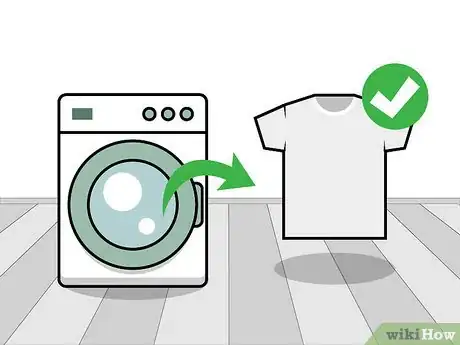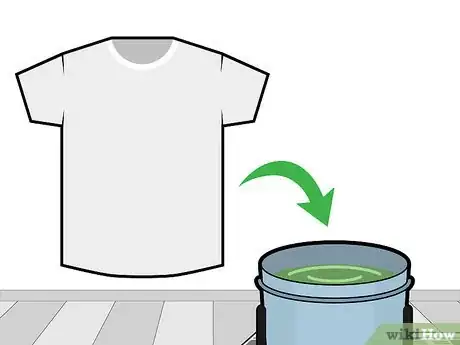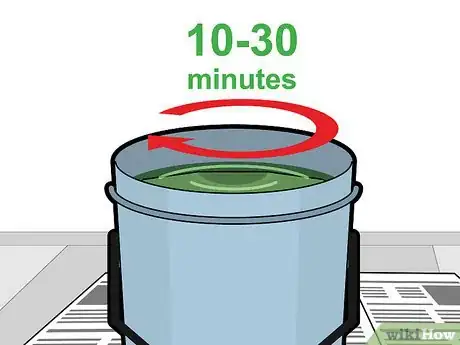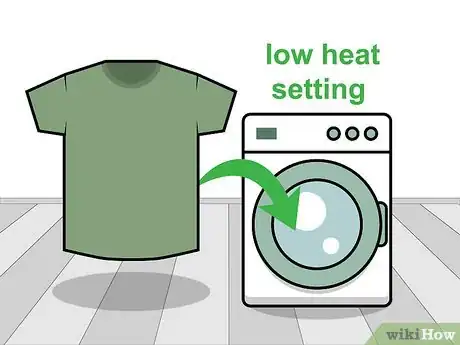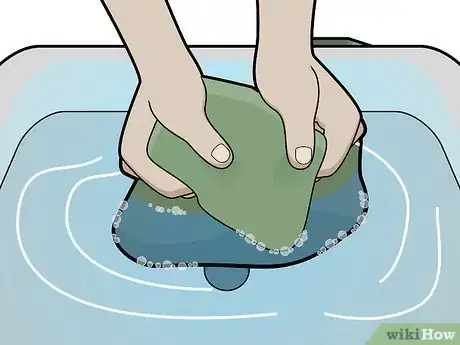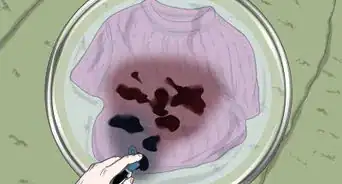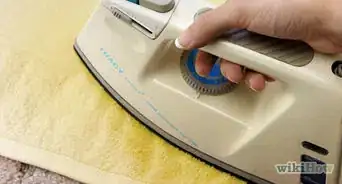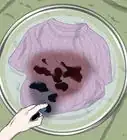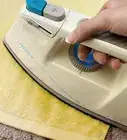This article was co-authored by wikiHow Staff. Our trained team of editors and researchers validate articles for accuracy and comprehensiveness. wikiHow's Content Management Team carefully monitors the work from our editorial staff to ensure that each article is backed by trusted research and meets our high quality standards.
There are 9 references cited in this article, which can be found at the bottom of the page.
wikiHow marks an article as reader-approved once it receives enough positive feedback. In this case, 92% of readers who voted found the article helpful, earning it our reader-approved status.
This article has been viewed 207,930 times.
Learn more...
Rit Dye is an all-purpose dye that can be used to color most natural fabrics, along with other materials like paper, wood, rope, and even nylon-based plastics. Since Rit Dye is premixed and comes in a variety of colors, it couldn’t be easier to use. Just choose a shade, add an appropriate amount to a container of hot water, and submerge the item you want to dye for 10-30 minutes. After a few washes, the item will have a vibrant new look and enjoy many more wears without fading or bleeding.
Steps
Mixing Dye
-
1Set out a container to do your dyeing in. A plastic bucket or dish pan that holds around 5 gallons (19 L) will allow you to work with bold colors without worrying about making a mess. You can also do your dyeing in a sink, provided that it’s stainless steel. Whatever container you select should be roomy enough to comfortably hold several gallons of water, along with the item you’ll be dyeing.[1]
- Don’t use Rit Dye in white porcelain or fiberglass sinks, as it can cause permanent stains.
-
2Protect your work area. Lay out a few sheets of newspaper or some old towels directly under your dyeing container. They'll serve as a barrier to keep the dye from coming into contact with the floor, countertop, or whatever other surface you're using. By taking a few extra moments to prepare, you stand to spare yourself an extensive cleanup process later on.[2]
- Be sure to also wear gloves while handling dye to avoid staining your hands.
Advertisement -
3Fill the container with hot water. For effective dyeing, the water you use should ideally be around 140°F (60°C) (hot enough to release steam). The intense heat will soften the fibers of the fabric and help them accept the dye.[3]
- Rit Dye recommends using 3 gallons (11 L) of water for roughly every pound 1 pound (454g) of fabric you’re coloring.[4]
- If the water from your tap doesn’t get as hot as you need, heat a few gallons in a tea kettle and transfer it to your dyeing container.
-
4Measure out an appropriate amount of Rit Dye. For best results, use approximately half a bottle of liquid dye per pound (454g) of fabric, or one whole box of powdered dye. If you’re dyeing a single t-shirt or a couple pairs of underwear, you can get away with using less, whereas you’ll likely need more for a heavy sweater or multiple pairs of jeans.[5]
-
5Stir the dye into the water. Liquid dye can be poured straight in. For powdered Rit Dye, mix the entire package into 2 cups (240ml) of hot water, then incorporate the mixture slowly until you achieve the desired depth of color. Stir the dye until it’s completely distributed.[6]
- Give the dye a good shake before pouring it in to make sure it’s properly mixed.
- Do your stirring with a stainless steel spoon or similar utensil.
-
6Add salt or vinegar for even dyeing. If the item you’re dyeing is cotton, dissolve 1 cup (300g) of salt into 2 cups (480ml) of hot water and add it to the dye bath. For wools, silks, or nylons, use 1 cup (240ml) of distilled white vinegar instead. Stir the dye bath once again to disperse the additives.[7]
- Some fabrics have a tendency to resist dyes. The salt or vinegar will serve to condition the fabric and promote consistent coloration.
Dyeing Garments
-
1Start with a freshly-laundered garment. Wash the item in warm water with a stain-fighting detergent, then dry on a low-medium heat setting. A preliminary cleaning will remove any foreign substances from the material that might interfere with the dyeing process.[8]
- Never attempt to dye soiled clothing. Dirt and oil buildup may prevent the dye from setting into certain areas, and the garment will come out looking streaked or spotty as a result.
-
2Perform a color test on an absorbent paper towel. Dip the corner of the paper towel into the solution and note the color. If you’re satisfied with the outcome, proceed to the next step. Otherwise, it may be necessary to add more dye a little at a time.[9]
- Repeat your color test on another part of the paper towel as many times as necessary until you get the color just right.
-
3
-
4Swish the item through the dye for 10-30 minutes. Keep the garment moving constantly so that every part of the fabric is exposed to the solution. The longer you leave it in the dye bath, the more intense the final color will be. For a mild color boost, stop around the 10 minute mark. Completely changing the color of a garment will require the full half hour.[12]
- A pair of tongs will make it easier to drag the item through the dye. Just be careful not to hold the fabric in the same spot the entire time, or the dye won’t be able to get to it.
- Be aware that the item may appear darker while it’s wet.[13]
-
5Remove the dyed garment. When you're satisfied with the look of the item, take hold of one corner with your tongs and lift it out of the dye bath. Allow the excess solution to drip off into the container, then wring out as much dye as you can by hand before moving the garment to another area.
- To avoid leaving a colorful trail of drips all over your home, set up your dyeing station close to the area where you'll be doing your rinsing.
Washing and Drying
-
1Rinse the item immediately. Hold the garment under a stream of warm water to wash away the saturated dye. Gradually decrease the temperature of the water so that it cools the garment in stages. Continue rinsing with cold water until it runs clear.[14]
- Going from warm to cool water will help the color set after the loose dye has been rinsed out.
-
2Run the item through the washing machine. Wash freshly-dyed apparel on a low heat setting with a mild detergent. Throw an old towel in to soak up any dye that happens to run. For the first few washings, separate different colored items to prevent bleeding and color-mixing.[15]
- Some materials may fade a little following a few washings.[16]
- Consider using color-preserving detergents and fabric softeners to maintain the appearance of your dyed clothing.
-
3Dry the item thoroughly before wearing. The heat from the dryer will reset the fabric, locking in the new color. Like you did while washing, make sure you keep an old towel with the item in case of minor bleeding. After an initial washing and drying, you can begin laundering dyed clothing as usual.[17]
- Once the item comes out of the dryer, it will be ready to wear!
-
4Wash and dry delicates by hand. Whisk less sturdy materials like wool, silk, and lace through a sinkful of clean, warm water. Mix in a small amount of detergent to clean and restore the fabric. Press out the excess water gently, then hang each garment separately and allow them to air dry.[18]
- It may take as long as 24 hours for hand-washed clothing to dry completely.
- Position a bucket or old towel beneath your dyed delicates as they dry to catch stray drips.[19]
Community Q&A
-
QuestionWith the purple dye, how can I make it darker? I am trying to make an eggplant purple.
 Community AnswerIf you are using Rit dye, use 3 parts purple and 1 part black. Mix with water as directed on the back of the box.
Community AnswerIf you are using Rit dye, use 3 parts purple and 1 part black. Mix with water as directed on the back of the box. -
QuestionHow much Rit Dye do I use for 5 gallons of water?
 Community AnswerYou will need 2 bottles. One bottle is used for each three gallons of water. Use two to be safe. Also, measure the weight of the clothing you plan to dye. More clothing may need more dye. Heavier clothing, such as jeans, may need more dye. Plan with these factors in mind.
Community AnswerYou will need 2 bottles. One bottle is used for each three gallons of water. Use two to be safe. Also, measure the weight of the clothing you plan to dye. More clothing may need more dye. Heavier clothing, such as jeans, may need more dye. Plan with these factors in mind. -
QuestionIs it possible to dye orange fabric to red?
 Community AnswerI would imagine so, just make sure you leave it in the dye for a long time. The only color you're trying to remove is the yellow that is already mixed with red to make orange, and since red is a more dominant color, enough dye and time should turn it all a solid red.
Community AnswerI would imagine so, just make sure you leave it in the dye for a long time. The only color you're trying to remove is the yellow that is already mixed with red to make orange, and since red is a more dominant color, enough dye and time should turn it all a solid red.
Warnings
- Do your best to avoid spills and splashes. If you accidentally get the dye somewhere it’s not supposed to be, it can be a pain to get the stains out.⧼thumbs_response⧽
- Read the ingredients listed on the label of the bottle carefully if you have reason to suspect you may be allergic to Rit Dye.⧼thumbs_response⧽
- Dyeing multicolored items can be tricky, since it’s not always possible to tell how each individual color will react.⧼thumbs_response⧽
Things You'll Need
- Large stain-resistant container
- Hot water
- Rit Dye (in liquid or powdered form)
- Salt (for cotton garments)
- Distilled white vinegar (for wools, silks, or nylons)
- Metal spoon or tongs
- Mild laundry detergent
- Rubber gloves
- Paper towel (for color testing)
References
- ↑ https://www.ritdye.com/techniques/tips-for-successful-dyeing/
- ↑ https://www.craftsy.com/blog/2013/08/dyeing-clothes/
- ↑ https://www.ritdye.com/techniques/the-basics/sink-or-bucket-technique/
- ↑ https://www.ritdye.com/techniques/tips-for-successful-dyeing/
- ↑ https://www.youtube.com/watch?v=wL6NFLL8NI0&feature=youtu.be&t=59
- ↑ https://www.ritdye.com/techniques/the-basics/sink-or-bucket-technique/
- ↑ https://www.youtube.com/watch?v=wL6NFLL8NI0&feature=youtu.be&t=35
- ↑ https://www.youtube.com/watch?v=wL6NFLL8NI0&feature=youtu.be&t=29
- ↑ https://www.ritdye.com/techniques/the-basics/sink-or-bucket-technique/
- ↑ http://www.rookiemag.com/2012/04/rit-dye-tutorial/
- ↑ https://www.collegefashion.net/fashion-tips/how-to-use-rit-dye-to-update-your-clothes/
- ↑ https://www.collegefashion.net/fashion-tips/how-to-use-rit-dye-to-update-your-clothes/
- ↑ https://www.ritdye.com/techniques/the-basics/sink-or-bucket-technique/
- ↑ http://www.rookiemag.com/2012/04/rit-dye-tutorial/
- ↑ https://www.ritdye.com/techniques/the-basics/sink-or-bucket-technique/
- ↑ http://www.ebay.com/gds/How-to-Use-Rit-Dye-/10000000177771501/g.html
- ↑ https://www.collegefashion.net/fashion-tips/how-to-use-rit-dye-to-update-your-clothes/
- ↑ https://www.ritdye.com/techniques/the-basics/sink-or-bucket-technique/
- ↑ http://www.rookiemag.com/2012/04/rit-dye-tutorial/
About This Article
Before you use Rit Dye on a garment, make sure to wash and dry the item since dirt and oils may prevent the dye from setting. Then, stir half a bottle of liquid dye into 3 gallons of hot water, and add 1 cup of salt for cotton items, or 1 cup of white vinegar for wools, silks, or nylons to ensure even coloration. Next, place the garment in the dye and use metal tongs to swish it for 30 minutes before removing. Afterwards, rinse the item with warm water, then wash it with a mild detergent and run it through the dryer to lock in the color. To learn how to wash delicate dyed fabrics that won’t’ hold up in the washing machine, read on.






